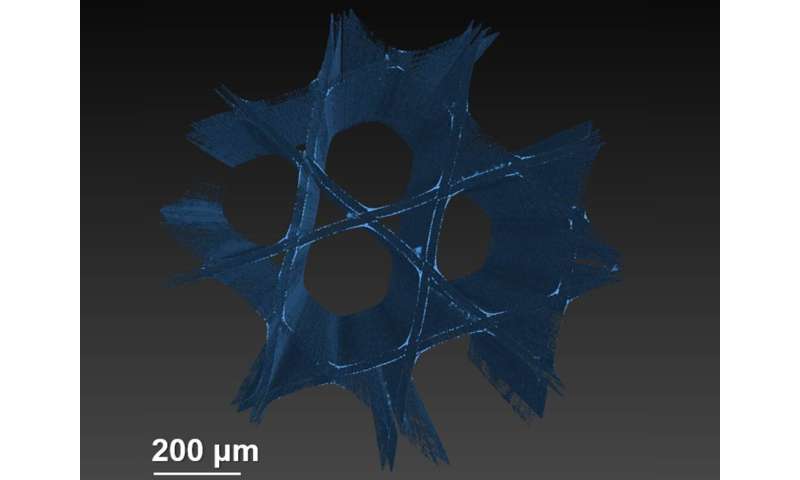Photocatalytic optical fibers convert water into solar fuel

Researchers at the University of Southampton have transformed optical fibers into photocatalytic microreactors that convert water into hydrogen fuel using solar energy.
The ground-breaking technology coats the inside of microstructured optical fiber canes (MOFCs) with a photocatalyst which—with light—generates hydrogen that could power a wide range of sustainable applications.
Chemists, physicists and engineers at Southampton have published their proof of concept in ACS Photonics and will now establish wider studies that demonstrate the scalability of the platform.
The MOFCs have been developed as high pressure microfluidic reactors by each housing multiple capillaries that pass a chemical reaction along the length of the cane.
Alongside hydrogen generation from water, the multi-disciplinary research team is investigating photochemical conversion of carbon dioxide into synthetic fuel. The unique methodology presents a potentially feasible solution for renewable energy, the elimination of greenhouse gases and sustainable chemical production.
Dr. Matthew Potter, Chemistry Research Fellow and lead author, says: "Being able to combine light-activated chemical processes with the excellent light propagation properties of optical fibers has huge potential. In this work our unique photoreactor shows significant improvements in activity compared to existing systems. This as an ideal example of chemical engineering for a 21st century green technology."
Advances in optical fiber technology have played a major role in telecommunications, data storage and networking potential in recent years. This latest research involves experts from Southampton's Optoelectronics Research Centre (ORC), part of the Zepler Institute for Photonics and Nanoelectronics, to tap into the fibers' unprecedented control of light propagation.
The scientists coat the fibers with titanium oxide, decorated with palladium nanoparticles. This approach allows the coated canes to simultaneously serve as both host and catalyst for the continuous indirect water splitting, with methanol as a sacrificial reagent.
Dr. Pier Sazio, study co-author from the Zepler Institute, says: "Optical fibers form the physical layer of the remarkable four billion kilometer long global telecommunications network, currently bifurcating and expanding at a rate of over Mach 20, i.e. over 14,000 ft/sec. For this project, we repurposed this extraordinary manufacturing capability using facilities here at the ORC, to fabricate highly scalable microreactors made from pure silica glass with ideal optical transparency properties for solar photocatalysis."
The new paper in the American Chemical Society (ACS) journal is led by Matthew, with contributions from Chemistry's Professor Robert Raja, Alice Oakley and Daniel Stewart, the ORC's Dr. Pier Sazio and Dr. Thomas Bradley, and Engineering's Dr. Richard Boardman at the µ-VIS X-ray Imaging Centre.
The research builds upon findings from the Engineering and Physical Sciences Research Council funded Photonic fiber technologies for solar fuels catalysis (EP/N013883/1).
Professor Robert Raja, study co-author and Professor of Materials Chemistry and Catalysis, says: "Over the past 15 years, we have pioneered the development of a predictive platform for the design of multifunctional nanocatalysts and we are excited this partnership with the ORC will lead to multiscale developments in photonics and catalysis."Leap in performance sees hollow-core fiber technology close in on mainstream optical fiber
More information: Matthew E. Potter et al. Combining Photocatalysis and Optical Fiber Technology toward Improved Microreactor Design for Hydrogen Generation with Metallic Nanoparticles, ACS Photonics (2020). DOI: 10.1021/acsphotonics.9b01577
Journal information: ACS Photonics
No comments:
Post a Comment